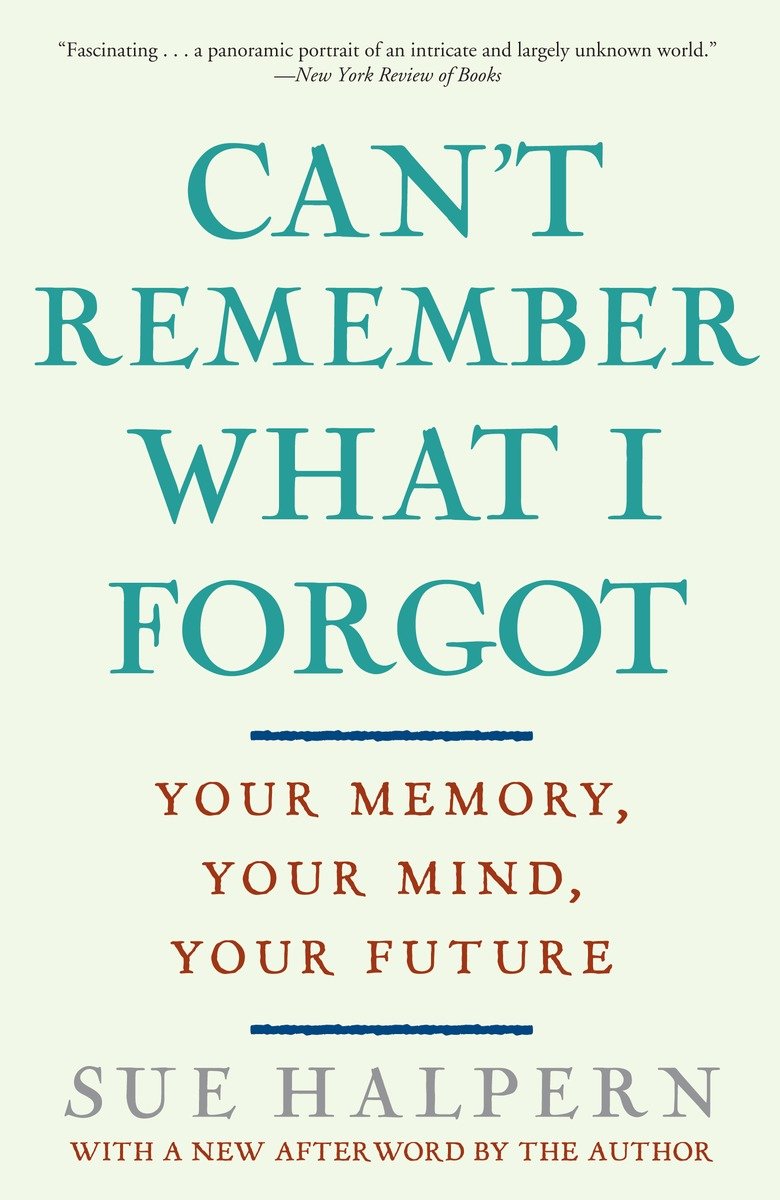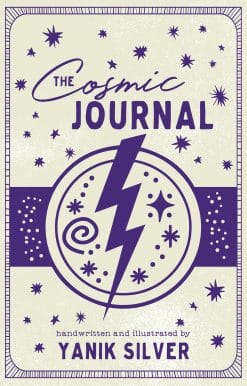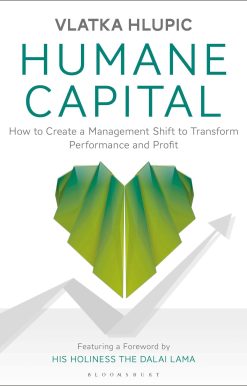Can’t Remember What I Forgot: Your Memory, Your Mind, Your Future
14.00 JOD
Please allow 2 – 5 weeks for delivery of this item
Description
Behind the Scenes of Cutting-Edge Memory ResearchWhen Sue Halpern decided to emulate the first modern scientist of memory, Hermann Ebbinghaus, who experimented on himself, she had no idea that after a day of radioactive testing, her brain would become so “hot” that leaving through the front door of the lab would trigger the alarm. This was not the first time while researching Can’t Remember What I Forgot that Halpern had her head examined, nor would it be the last. Like many of us who have had a relative or friend succumb to memory loss, who are getting older, and who are hearing statistics about our own chances of falling victim to dementia, Halpern wanted to find out what the experts really knew, how close science is to a cure, to treatment, to accurate early diagnosis, and, of course, whether the crossword puzzles, sudokus, and ballroom dancing we’ve been told to take up can really keep us lucid or if they’re just something to do before the inevitable overtakes us.Sharply observed and deeply informed, Can’t Remember What I Forgot is a book full of vital information and a solid dose of hope.
Additional information
| Weight | 0.24 kg |
|---|---|
| Dimensions | 1.63 × 13.37 × 20.27 cm |
| PubliCanadation City/Country | USA |
| by | |
| Format | Paperback |
| Language | |
| Pages | 288 |
| Publisher | |
| Year Published | 2009-5-26 |
| Imprint | |
| ISBN 10 | 0307407888 |
| About The Author | SUE HALPERN is the author of Four Wings and a Prayer, Migrations to Solitude, and two books of fiction. |
“Fascinating….[Halpern’s] accomplishment is to have drawn out the myriad threads of these stories, connecting them when possible, to produce a panoramic portrait of an intricate and largely unknown world.” —New York Review of Books“Evincing a gift for perfect analogies and supple metaphors, mischievous humor, and righteous skepticism, Halpern is an exceptionally companionable and enlightening guide through the maze of memory maladies and the promising search for remedies.”—Donna Seaman, Booklist (starred review)“A vivid, often amusing introduction to a science that touches us all.”—Publishers Weekly“Engrossing….High-quality science writing: an illuminating picture of investigators at work and a lucid explication of their findings.”—Kirkus"Educational, fabulously well written, and on a hot topic. Highly recommended for both public and academic libraries."— Nancy Fontaine, Library Journal (starred review)“Like her fellow New Yorker writer, Malcolm Gladwell, Sue Halpern has the remarkable capacity–genius, actually– to absorb large amounts of complex information and deliver them to the reader in a comprehensible, engaging, page-turning way. In Can’t Remember What I Forgot, she travels to the cutting-edge of medical and scientific research about memory and reports back with critical information for all of us now dealing with aging parents and with our own aging. Informative, beautifully written, and hard to put down, this is a book you have to remember not to forget to buy.”—Julia Alvarez |
|
| Excerpt From Book | Author’s NoteOn the canted ceiling above my desk is a map of the brain. Itshows the frontal lobe and temporal lobe and parietal lobe and occipitallobe as if they were places to visit–Rome, Milan, Trieste,San Remo. The map, of course, is dumb. It says nothing about whatgoes on in those places: that deep in the middle of the temporallobe, which itself is deep in the middle of the brain, there is a tiny,cashew-shaped region called the hippocampus that is essential toforming new memories, or that the prefrontal cortex, which sits behindthe eyebrows, is vital to foresight and being polite and payingattention, or that the occipital lobe, which brings up the rear of thebrain, is central to sight itself.I look at that map sometimes and think about how it is my ownbrain apprehending it, and that to do so, it is traveling express. Andthen my mind, declaring its independence from my brain, begins towander among the events of the day, past and future, and plans forsummer vacation, and concern for a friend who is sick and the dogin the yard, but never getting so far afield that it doesn’t heed itsown call back.Near the map, tacked to the wall, is a picture of the brain that isdoing all of that and all of this–this writing, thinking, typing,seeing–my brain, in bright colors, which was taken a few years agoin California. When I look at that picture I am not only seeing it,but recalling that day, or aspects of it, so much has gone out withthe tide. I took notes on that trip, and carried a digital recorder, andhave read and reread those notes over the years, and listened to theconversations, so I remember that day better than most, and what Iremember comes with a certain confidence, but even so it is fuzzy. Icannot say, for instance, what kind of rental car I drove, or whatbook I was reading later that afternoon when I went to the beach,or which beach, specifically, it was.We rely on memory not only to remember, but to walk and dreamand talk and smell and plan and fear and love and think and learnand more and more and more. Memory is how we know the world–that is a tree, this is a sentence–and know ourselves–I like chocolateice cream, I am a singer–and know ourselves in the world. Amnesiacsmake the case well: it is not, simply, that they don’t remembertheir name or where they live, it is that absent memory, they arestrangers to themselves. The English philosopher John Locke believedthat we came into the world with our mind a blank slate, a“tabula rasa,” ready for the pen of experience to inscribe. It’s a perfectmetaphor (even if it’s not exactly true), because it works to describewhat it’s like to gain knowledge, and what it’s like to lose your mind.Stroke by uneven stroke, the eraser plies the board.My father, before he died at the age of seventy-seven, had begunto know this intimately, though never to the extent that the boardwas wiped so clean that he approached Locke’s natal state. Heknew, and he talked about it–about how frustrating it was to readthe newspaper and then have to read it again, or to stare at a canopener, not knowing what it was for, or to pick up the phone to calla friend, whose funeral he’d attended two years earlier.While it might have been natural for me to worry that my father’sfate someday would be my own, I didn’t, really. The doctorsaid he didn’t have Alzheimer’s disease, and since Alzheimer’s diseasetends to run in families, I figured I was safe. This was not one ofthose calculate-your-odds kind of conclusions. It wasn’t a calculationat all. At best it was a passing thought. Call it denial, call it repression,or maybe arrogance, I just figured that if he didn’t haveAD, what was it to me?But later, after he was gone, and all that was left were my memories,some photos, and the key-chain recorder my mother madehim carry like a pair of military dog tags at the end in case he gotlost, into which he spoke his name, his phone number, and hisstreet address in the flattest of voices, I began to wonder. What ifthe doctor had been wrong? Almost everyone I knew had a parentor an in-law or a favorite aunt or a colleague or a neighbor or agrandfather or a friend or a friend of a friend who had Alzheimer’s,as if the standard six degrees of separation had been universallyabridged to one or two. But another question bothered me more:what if the doctor had been right? What I mean is: what if my fatherhadn’t been sick?This was not a wishful fantasy about what my father’s last yearswould have been like if, when going to the basement to sort the recycling,he didn’t lose track of which items went in which bin andstood there, paralyzed by confusion, for half an hour, or if he hadn’tthought he’d filed his income tax when he hadn’t. He knew who hischildren were. He remained interested in politics. He had neverneeded to activate the key-chain recorder. The question, rather,was a kind of private, one-person, one-vote referendum on sicknessand health: if he wasn’t sick, what was going on?Since it is the nature of questions to beget more questions beforethey yield answers, I soon stopped thinking about my father,specifically, or about myself, even when I wondered why, for instance,the memory of a forty-four-year-old was generally betterthan the memory of a seventy-seven-year-old (or was it?), and whythe memory of a twenty-six-year-old was better than both. The answerto this was not as obvious as it might appear. If age were theculprit, what, precisely, was it stealing?In the popular literature I kept coming across references to thebrain that made it sound like a muscle. “Use it or lose it” was the standarddogma. I read countless self-help books that promised to helptheir readers “use it,” and compiled a stack of newspaper articlesthat touted crossword puzzles and sudokus as the mental equivalentsof jogging and strength-training, and the more of these I looked at,the more curious it all seemed to me: I understood that these activitieswere supposed to be good for you because, apparently, theybuilt mental muscle, but why was that? Was there a physiologicalresponse to crossword puzzles, something that happened to the bodyby doing them, and just whom did they help? Anyone of any age?People with mild memory problems? The worried well? People whowere sick? And if they were beneficial for people who were sick aswell as people who were not, was that because the same thing wasgoing wrong in the healthy brains that had already gone awry inpathological ones?The questions piled up in my notebook, a sign, perhaps, that Iwas using my brain, but to what end? Books evolve idiosyncratically,their single law of natural selection being, it seems, that theychoose you. I began calling up neuroscientists and spending timewith doctors and sometimes their patients. They were in New York,New Haven, San Francisco, Minnesota, Massachusetts, Chicago,Los Angeles, and Irvine. They were in England and the DominicanRepublic and Canada and Italy and Iceland. To friends or acquaintanceswho, upon hearing what I was doing, told me their particularmemory complaint or expressed a more generalized worry, I couldtell them how many smart and committed people were out therelooking for genes and molecules, developing drugs and vaccines,searching out cures and therapies in plants and minerals already athand. These bench scientists and clinicians were making headway.Moore’s law–the one about the speed of microprocessors doublingevery eighteen months–didn’t quite apply, but there was progressbeing made and I was seeing it. (I was also seeing rogues and patentmedicine salesmen, but doesn’t every court have its jesters?)The other thing I kept running into was lots of exclamations. Aweek couldn’t go by, it seemed, without an announcement of a breakthroughdrug, a breakthrough gene, a breakthrough gene mutation, abreakthrough cognitive therapy, a breakthrough food, a breakthroughherb–so many breakthroughs that it seemed as though whateverwall there had been between us and the dark should have comedown already, letting us bask in the sunshine of the eternal mindcure. But hey, not so fast.Before a drug can come to market, before a therapy can be designed,and (more often than not) before a body can be healed, youhave to know where the problem lies. In medicine that knowledgeis often found at the cellular or molecular or genetic level, somewherein the mix of proteins of which we are made. To get throughthe hyperbole and hype and promises and platitudes that now attendto most public discussions about memory (which almost always,these days, seem to be about memory impairment), I had tofind out what the molecular biologists and cell biologists and biochemistsand geneticists knew. This meant spending time in brainscanningsuites and chemistry labs and mice nurseries and hospitalsand pharmaceutical companies, and attending scientific meetings,and reading research papers with unintelligible titles. Because thereare now many ways to look at the brain, I also made sure mine wasexamined using each of them, in honor of one of the first scientistsof memory, Hermann Ebbinghaus, who made it a point to experimentupon himself. Still, as a neuroscientist at Yale pointed out tome, “you can’t tell much from an N of 1.”In our own lives, by definition, we are always Ns of 1, which isone reason why the prospect of getting sick can be so scary, and whybeing sick is scarier still, especially if either of those conditionsentails the loss of self. (Can there be an N of −1?) If we’re lucky,of course, our Ns connect–directly, contiguously, through eachother–which is how families and communities are formed. It is alsohow, in science, evidence mounts and findings are made and thenconfirmed.In the years that I was writing this book, crucial findings aboutmemory loss and Alzheimer’s and normal memory and medicinesand cognitive therapy were made and confirmed, and even wherethey were not, the ball was pushed farther up the pitch. From myseat the view has been outstanding, and from what I have seenthere are many reasons to cheer.Ripton, VermontNovember 2007 |
Only logged in customers who have purchased this product may leave a review.






Reviews
There are no reviews yet.